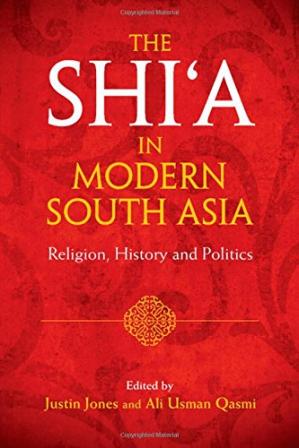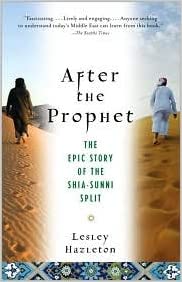As reported on August 9, unidentified gunmen shot dead a Shia caretaker of an imambargah (Shia place of worship) Syed Mukhtar Hussain Shah (52) in Peshawar, provincial capital of Khyber Pakhtunkhwa. Police said unknown armed assailants opened fire on Syed Mukhtar Hussain Shah (52) when he was returning home from the market. Shah was the caretaker of imambargah Chah Roshan Shah Malana.
On May 5, one person was injured in a blast on an imambargah in the Shoorki area of Kurram District of Khyber Pakhtunkhwa. The injured person, who reportedly worked as a caretaker at the imambargah, has been shifted to a local hospital.
The ‘2019 International Religious Freedom Report,’ of the US Department of State, released on June 10, 2020, has voiced concern over the targeted killing in Pakistan of Shia Muslims, including ethnic Hazaras, who are largely Shia, and Ahmadi Muslims in attacks believed to be driven by faith. Also, BBC’s report, titled, “The story of Pakistan’s ‘disappeared’ Shias”, published on May 31, 2018, states that around 140 Shias did disappear in Pakistan over a period of two years. The UK Home Office in its report, ‘Country Policy and Information Note Pakistan: Shia Muslims’, dated January 2019 explains the discrimination experienced by Shias in Pakistan:
“Though as Muslims they are free from certain restrictions affecting other religious groups, Shi’a are still regarded as apostates by some extremist Sunni groups and individuals. As a result, many face regular hostility from extremists and public calls for members to be killed. Shi’a have also been subjected to various forms of hate speech, most commonly as campaigns in mosques, schools, public spaces, and increasingly on social media. Shi’a are vilified as a community for their religious beliefs and individuals are also picked out for criticism.”
Few of the prominent incidents include:
On June 24, 2017, at least 67 people were killed and more than 200 injured in back-to-back explosions in the Turi Bazaar area of Parachinar, the headquarter of Kurram Agency, in erstwhile FATA (Federally Administered Tribal Areas) when the market was crowded for Iftar and Eid shopping.
On March 31, 2017, at least 24 persons were killed and another 100 injured in a suicide attack on an Imambargah in the Noor market area of Parachinar town in Kurram Agency of FATA.
On October 23, 2015, 22 people, including eight children were killed in a suicide blast targeting a 9th Muharram (Shia mourning period) procession near a park in the Lashari area of Jacobabad District in Sindh. Around 40 others, including several children, were injured in the attack.
On June 8, 2014, as many as 30 Shia pilgrims were killed and many injured in bomb explosions and firing in Taftan tehsil of Chaghai District in Balochistan.
Shias Muslims considered minorities
Historically, the Shia community has rarely been considered a minority in Pakistan (at least in treatment, if not in number). Shias being targeted in the same way as other religious minorities is a relatively recent phenomenon in Pakistan. Though, the Pakistan government does not officially support discrimination against Shias, it is failing to efficiently counter the influence of extremists and bring an end to violence against the community.
The Shia population is spread throughout Pakistan. While they do not constitute a majority in any of Pakistan’s four provinces, Shia do form a majority in the Pakistani-controlled autonomous region of Gilgit Baltistan.
Significant numbers of Shia live in Peshawar, Kohat, Hangu, and Dera Ismail Khan in Khyber Pakhtunkhwa; in Kurram and Orakzai Agencies in the FATA; in and around Quetta and the Makran coastline in Balochistan; in parts of southern and central Punjab; and throughout Sindh. Large Shi’a communities live in urban centres throughout Pakistan, including Karachi, Lahore, Rawalpindi, Islamabad, Peshawar, Multan, Jhang and Sargodha.
Rise in blasphemy cases
Unsurprisingly, the situation in Pakistan might turn more volatile, as a newly formed coalition of various Sunni groups will stage a sit-in protest in Islamabad on September 14 to demand the arrest of Shia clerics and eulogists accused of blasphemy. As reported on September 4, several Sunni organizations are known for their vocal support for controversial blasphemy laws, Jamiat Ulema Islam, Ahle Sunnat Pakistan, Aalmi Majlis Tahuffuz Khatm Nubawwat, Markazi Jamiat Ahle Hadith, JUI-S, Sunni Ulema Council and others met in Islamabad and announced the creation of a new coalition to demand the arrest of Shias under blasphemy laws.
The demand came despite an unprecedented wave of arrests of Shias on charges of insulting the Prophet Muhammad’s companions, as explained above. The case of blasphemy arose as Shias blame certain Islamic figures for events that led to the Karbala tragedy but the same people are revered by Sunnis for being companions of the Prophet Muhammad. Apart from arrest, the other demands include the establishment of a national commission to stop sectarianism, religious hatred, and incitement.
Moreover, the European Foundation for South Asian Studies quotes Dr. Qaiser Julius, Director of Open Theological Seminary in its report, titled, Guilty until proven innocent: The sacrilegious nature of blasphemy laws Pakistan, published in April 2020:
“Pakistan highlights, the biggest proportion of Muslims charged with blasphemy offences still belong to the Shia community, which is considered one of the most persecuted minorities in Pakistan… in 2013, 70% of Muslims, which were accused of religious offences (excluding the Ahmadiyya community), were Shias. Considering that recognized religious minorities in Pakistan constitute only 4 % of the entire population and the Shia community further accounts for 10-15%, what becomes evident is, that the country’s blasphemy laws have been disproportionately targeting minority groups, often used as a tool for promoting discrimination and bigotry.”
Hazaras under attack
Also, the ethnic Hazara communities, who are mainly settled in Balochistan, face severe violent attacks because of their Shia lineage. The community has been reduced to living in two ghettos in Pakistan’s Balochistan, especially in Mari Abad and Hazara town.
Tragically, according to Pakistan’s National Commission for Human Rights, report of 2018, more than 2,000 Hazaras have been killed in Pakistan in the last 14 years. Also, according to ‘Country Policy and Information Note Pakistan: Hazaras’, published in November 2019, by the UK’s Department of State, around 540 Hazaras have been killed in apparent sectarian attacks since 2012 in Balochistan.
Also, the report states, that Hazaras are denied access to education and health facilities or to transportation in Quetta. Hazaras often try to conceal their identity by covering their heads when traveling outside the enclave’s groups, and terror outfits such as the Lashkar-e-Jhangvi (LeJ), continue to organise public and free-spoken anti-Shia rallies, particularly against the Hazara community. Apparently, LeJ uses madrasa (Islamic Seminary) cells to run its extremist militancy against the Hazaras. The LeJ has claimed responsibility for various mass-casualty attacks against the Shia community in Pakistan.
Interestingly, the current ruling party, the Pakistan Tehreek-e-Insaf (PTI) government, under the leadership of Prime Minister Imran Khan, vowed in their 2018 election manifesto, “PTI will protect the civil, social and religious rights of minorities; their places of worship, property, and institutions as laid down in the Constitution.” Amongst the list of promises for a “Naya Pakistan,” there were two significant pledges that still require the government’s attention: ensuring equal justice and safeguarding minorities from violence, hate speech, and discrimination.
Source:
https://www.southasiamonitor.org/spotlight/pakistan-cost-being-shia
(The writer is a Research Fellow, Institute for Conflict Management, New Delhi. The views expressed are personal. She can be contacted at sanchita.bhat83@gmail.com)






